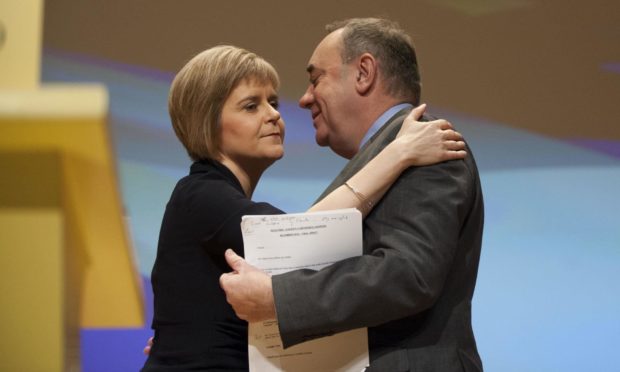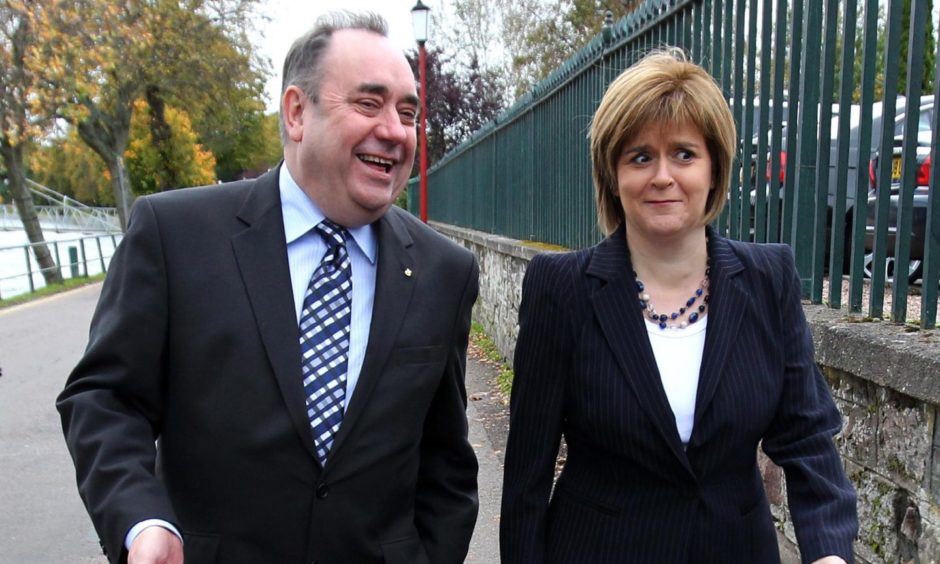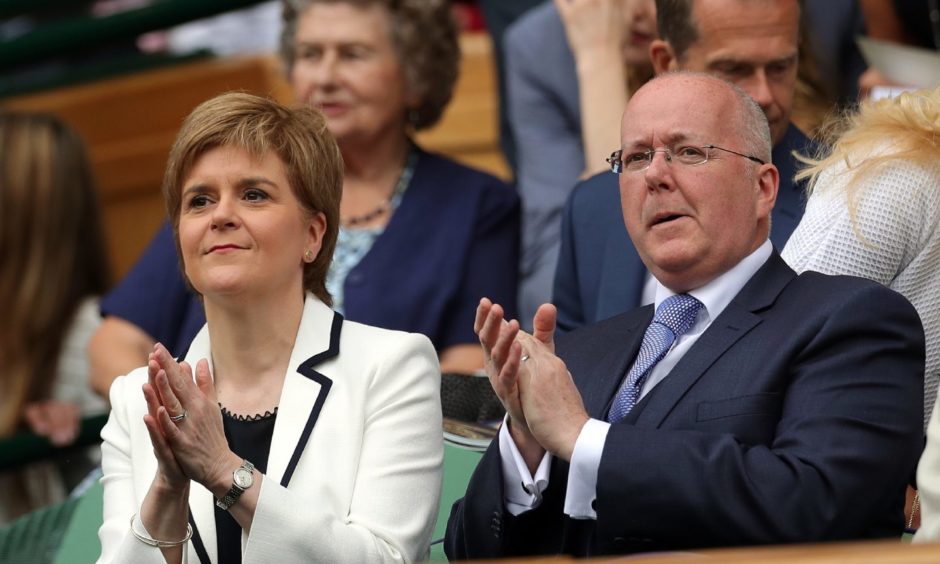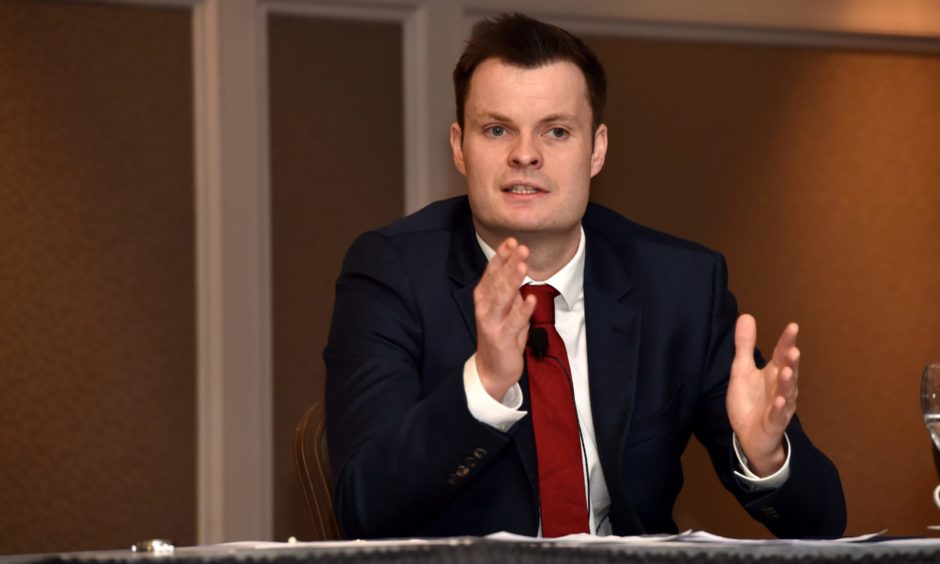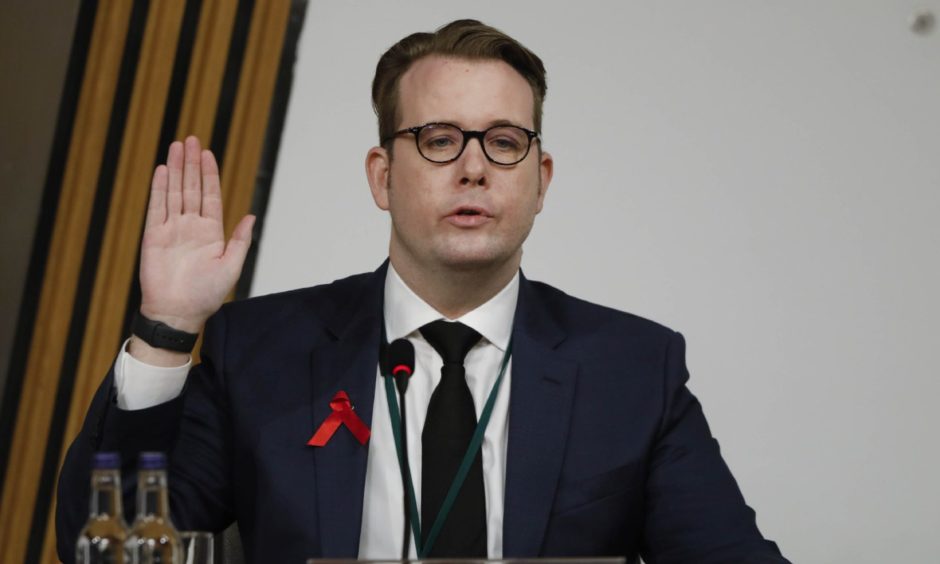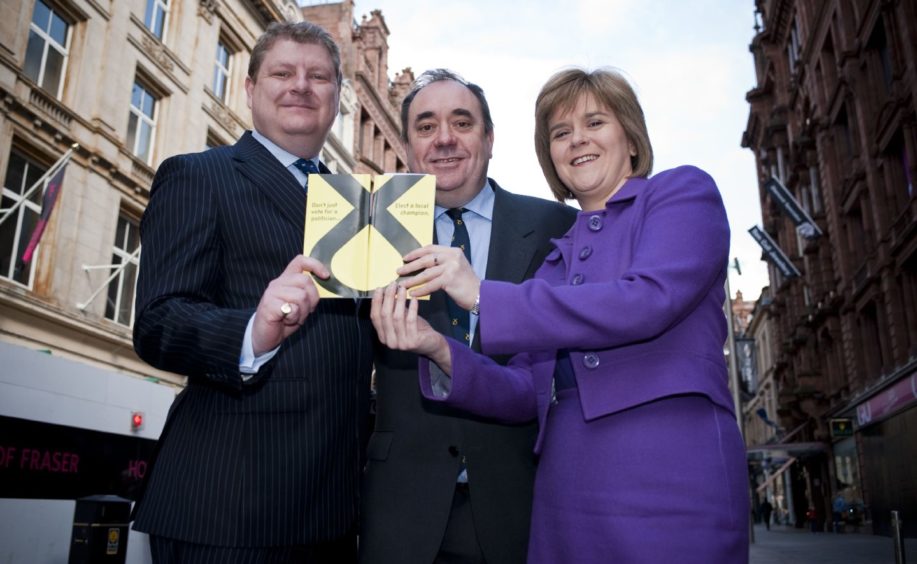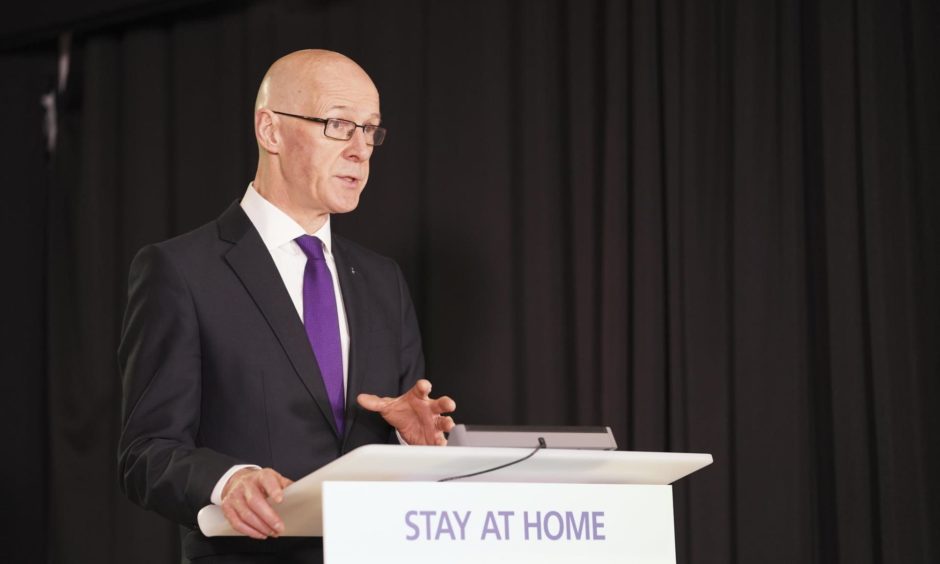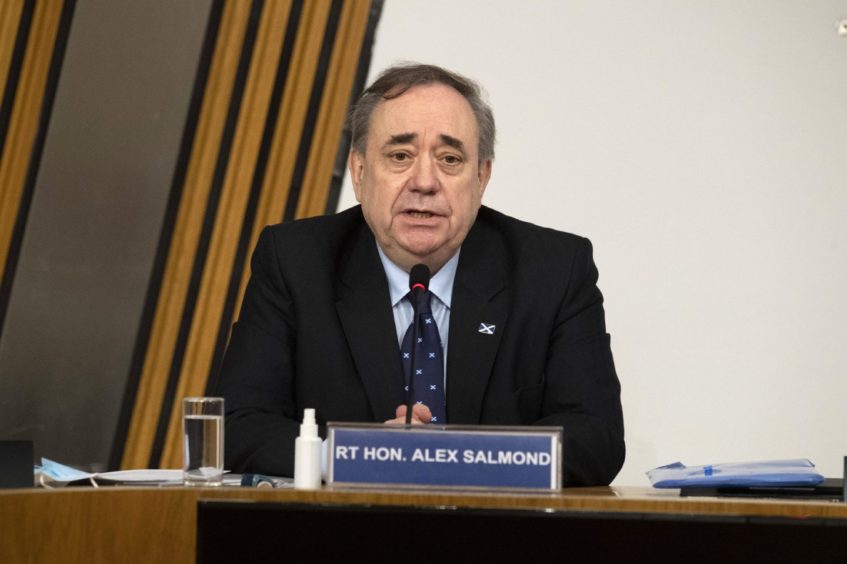Nicola Sturgeon is poised to testify today as the final witness in the Holyrood inquiry into the government’s handling of harassment allegations against Alex Salmond.
Ahead of her appearance, we look at some of the key questions facing the first minister.
Did she breach the ministerial code over meetings in 2018?
Ms Sturgeon initially informed MSPs that she was told about a complaints process that was under way against Mr Salmond when she met him at her home on April 2 2018.
However, she later said she had “forgotten” about another meeting four days earlier with Geoff Aberdein, former chief of staff to Mr Salmond.
Mr Salmond has claimed these talks set up the April 2 meeting.
On Friday Mr Salmond said: “In terms of a breach of the ministerial code, I would have thought that either explanation breaches the ministerial code.
“Either the meeting on March 29 was not forgotten about and parliament was deliberately misled, or, alternatively, it was forgotten about and parliament was not informed when Nicola was reminded of it.”
Did she meet Mr Salmond in her capacity as first minister or as SNP leader?
Ms Sturgeon has said she suspected the reason Mr Salmond wanted to see her on April 2 was that he was facing an allegation of sexual misconduct, and the reason she agreed was “both political and personal”.
She said: “I thought Mr Salmond may be about to resign from the SNP and that, as a result of this or other aspects of how he intended to handle the matter he was dealing with, the party could have been facing a public/media issue that we would require to respond to.”
However, her suggestion that she met him as SNP leader appeared to be contradicted by her husband Peter Murrell, who is the party’s chief executive.
He told the committee he was not involved in the meeting because the “issue raised at the time was a Scottish Government matter”.
Under the ministerial code, if Ms Sturgeon held the meetings on government business in her capacity as first minister, as Mr Murrell suggested, then the details of the discussion should have been officially recorded.
On Friday Mr Salmond said: “My public resignation from the SNP at that stage would have been regarded as astounding news and would have been the diametric opposite of what I was trying to achieve, so I had no thought of resignation whatsoever.”
Was the name of a woman who complained about Mr Salmond passed to him?
Mr Salmond has claimed he was made aware of the name of one of the complainants against him after it was shared with Mr Aberdein during the meeting with him.
“I know because my former chief of staff told me that,” he said on Friday.
However, Ms Sturgeon told the Scottish Parliament last week: “To the very best of my knowledge, I do not think that happened.”
Was a new Scottish Government harassment policy drawn up for use against Mr Salmond?
It has previously emerged that one of the two women who went on to make a complaint to the government about Mr Salmond had meetings with Ms Sturgeon’s principal private secretary, John Somers, on November 20 and 21 2017.
One day later, on November 22, Mr Somers forwarded a letter from Ms Sturgeon to Scotland’s most senior civil servant, Leslie Evans, asking the permanent secretary to confirm that the new harassment policy being drawn up included consideration of complaints made against former ministers.
When he later gave evidence to the committee, Mr Somers denied informing Ms Sturgeon or anyone other than his line manager about what was discussed.
On Friday Mr Salmond questioned why there had been an “extraordinary rush to get a policy for former ministers through in November and December 2017”.
Was she aware that concerns had been raised about Mr Salmond’s conduct in 2009?
Former SNP Westminster leader Angus Robertson has told the committee he was called by an Edinburgh Airport manager in 2009 about Mr Salmond’s “perceived inappropriateness” towards female staff at the airport.
He said he raised the matter directly with Mr Salmond, who denied he had acted inappropriately in any way, and that Mr Robertson later considered the matter “resolved”, and that it was not reported further.
Ms Sturgeon has said that the first time she was made aware of the Edinburgh Airport incident, and of concerns about Mr Salmond’s alleged behaviour, was in November 2017, when Sky News contacted the SNP press office about it, for a story which did not run.
Did the government ignore its own legal advice when it continued the Alex Salmond civil case?
The committee was due to receive a copy of the government’s legal advice on Tuesday in relation to the civil case on Tuesday.
Deputy First Minister John Swinney said it would show that there were “reservations” raised about the case, although also that there were “reasonable grounds” to continue.
Mr Salmond said on Friday it would represent a breach of the ministerial code to carry on legal action in the Court of Session while knowing that the government had acted unlawfully in the way it had handled the complaints against him.
He said: “If that is the case — if the legal advice says that — and the case was continued in the knowledge of the first minister against that legal advice, that would be a breach of the ministerial code.”
Was she involved in a conspiracy to ruin the reputation of Mr Salmond or was she aware of such a plot?
Mr Salmond has claimed that a “range” of people set out to destroy his reputation, and even have him jailed, in a “deliberate, prolonged, malicious and concerted” way.
He has named Mr Murrell among the group of senior SNP and Scottish Government figures he accuses of the plot.
Asked if he believed Ms Sturgeon was involved, her predecessor as first minister said: “Everything that I have said in the evidence that I have submitted to you can be backed up by documentary evidence — every statement that I make.
“Therefore, as I do not have documentary evidence that suggests that the first minister has text messages or any other piece of information that involved the first minister, I have not made that accusation.
“That is because I decided, quite properly, I think, only to make statements that could be backed up by documentary evidence.”
